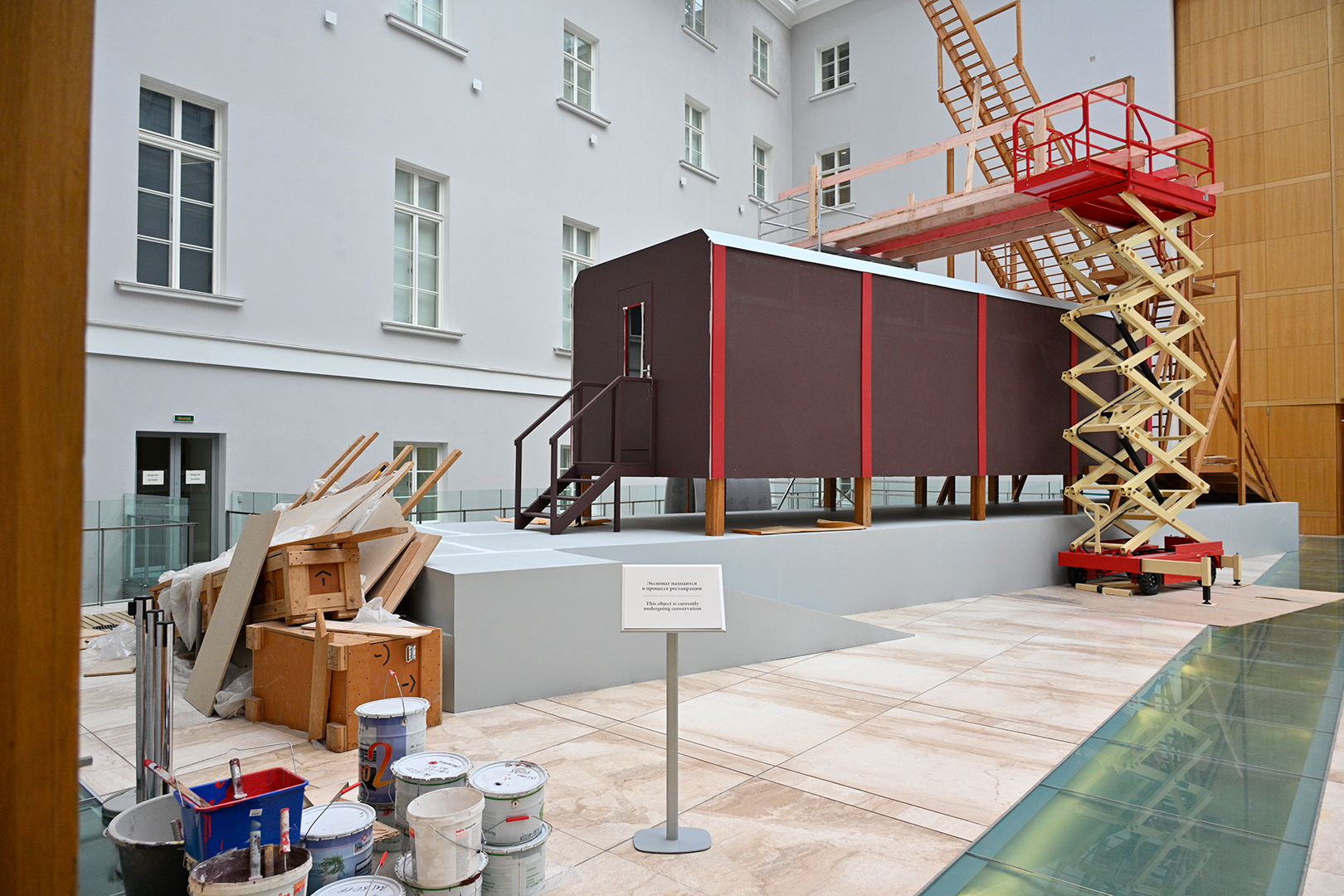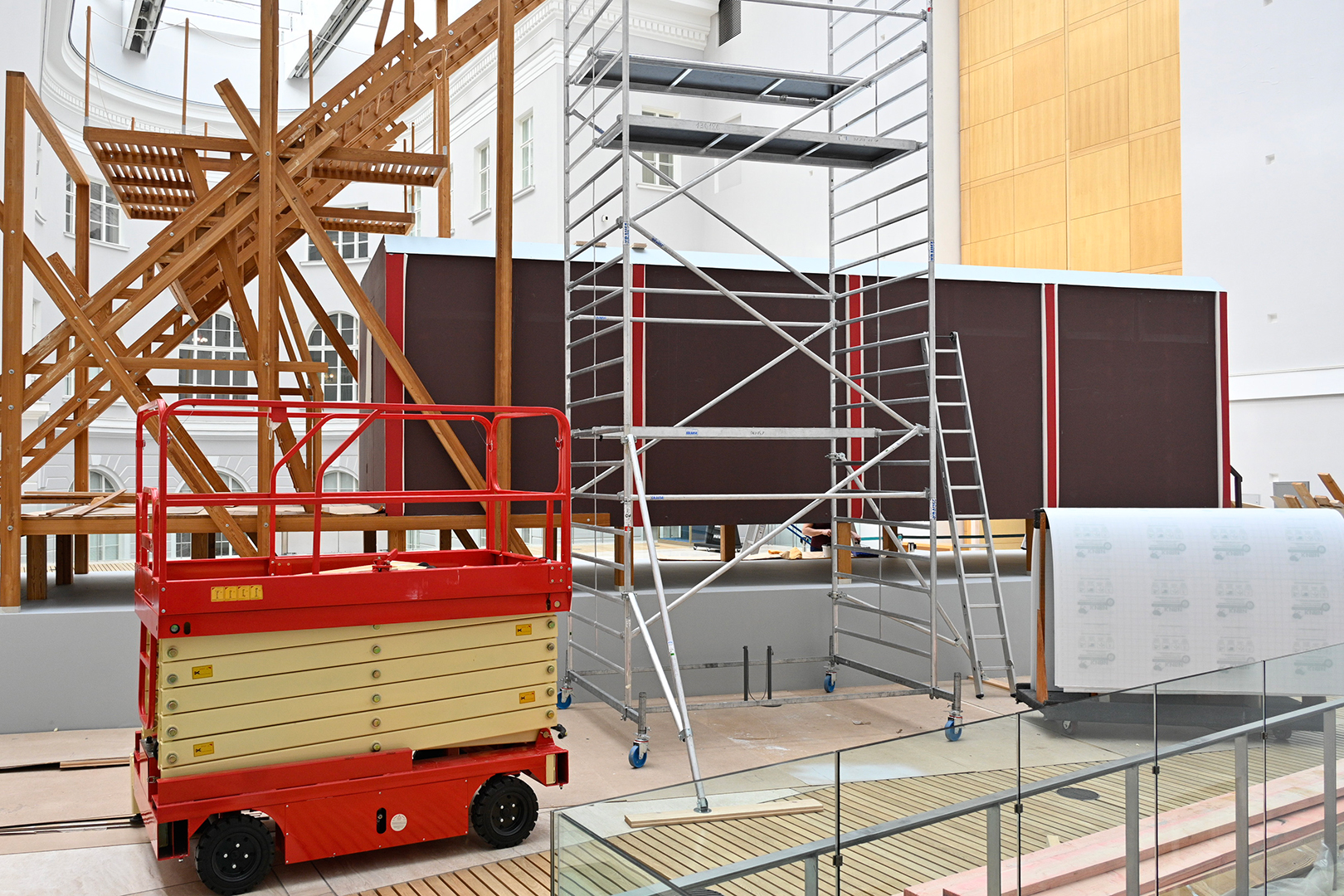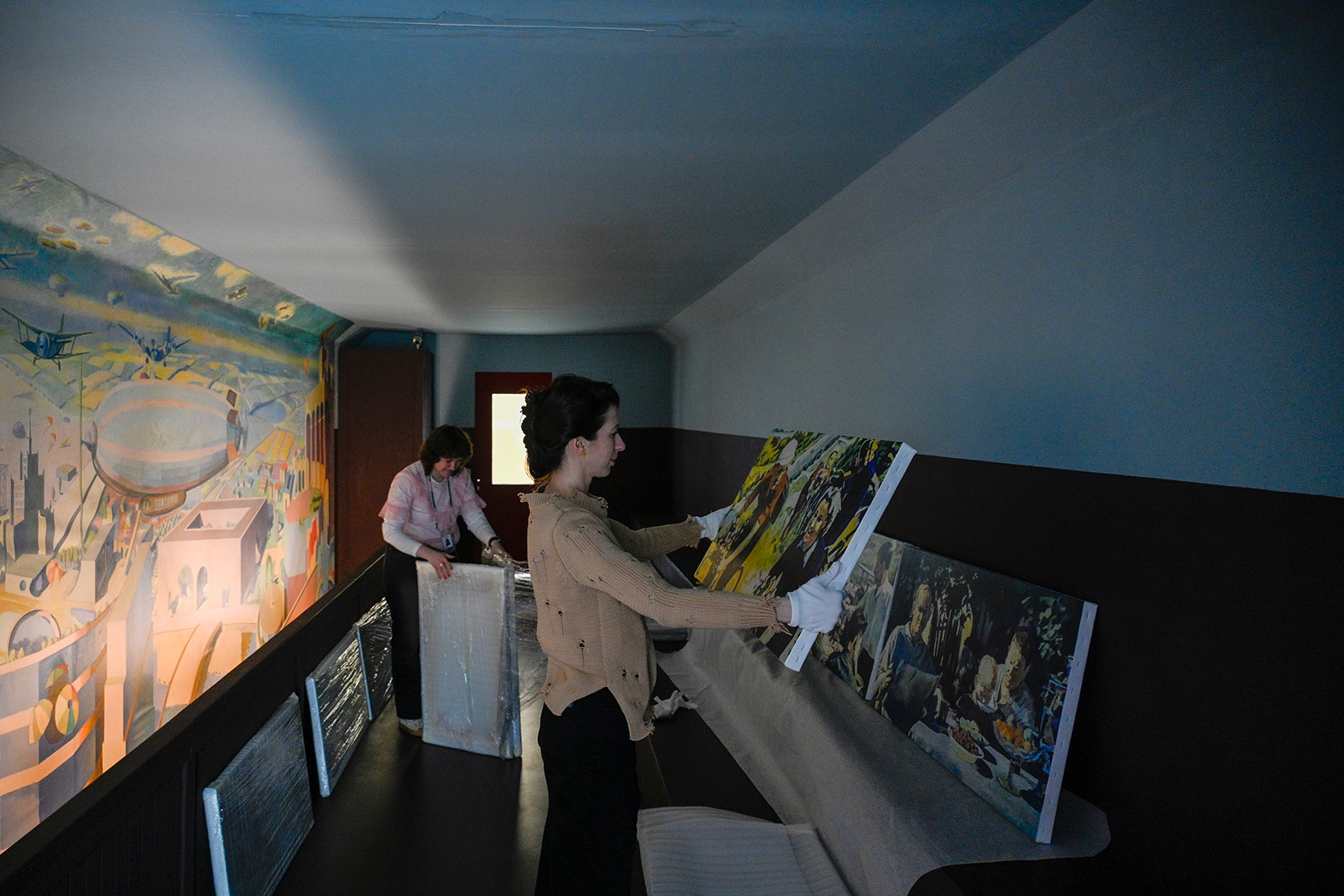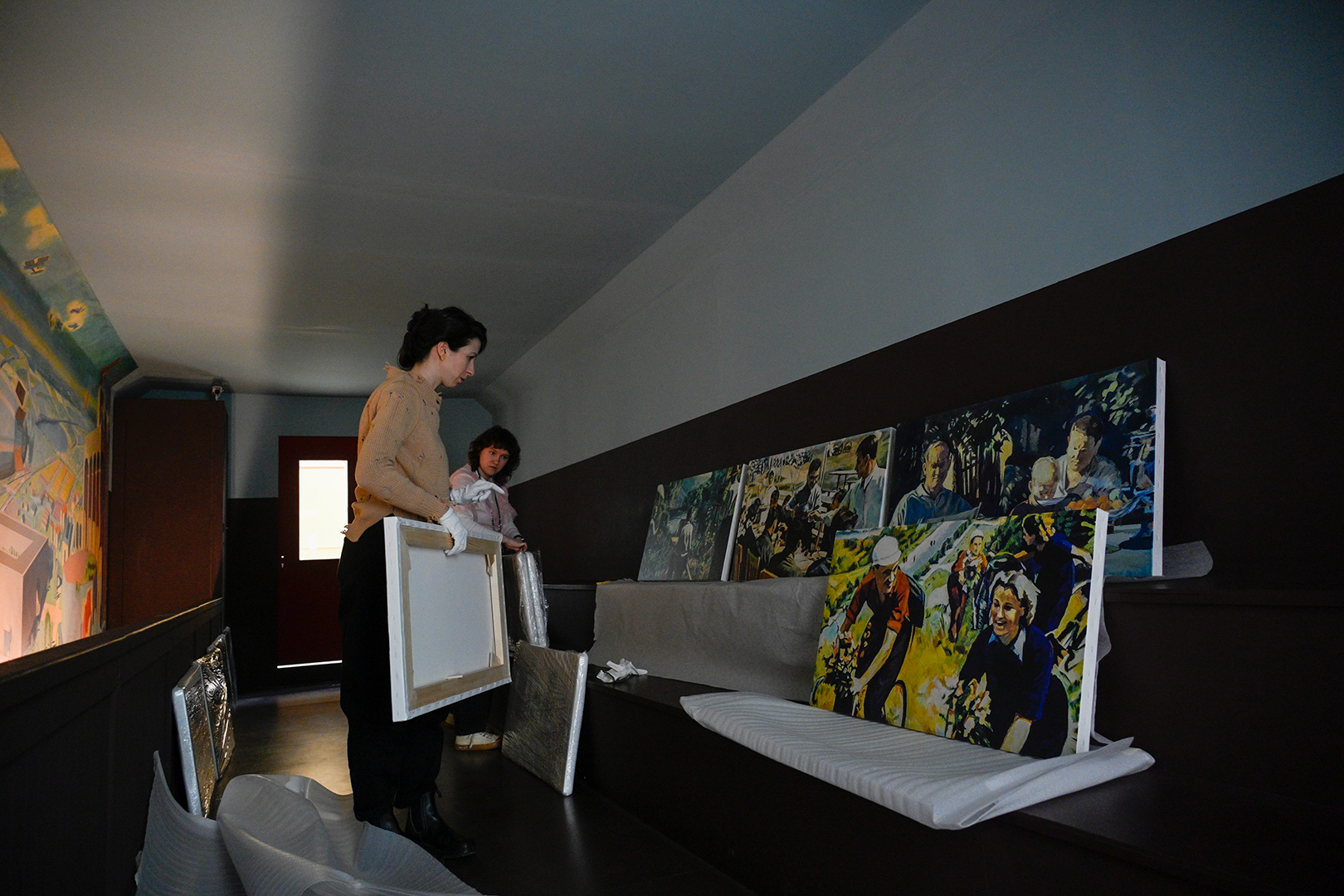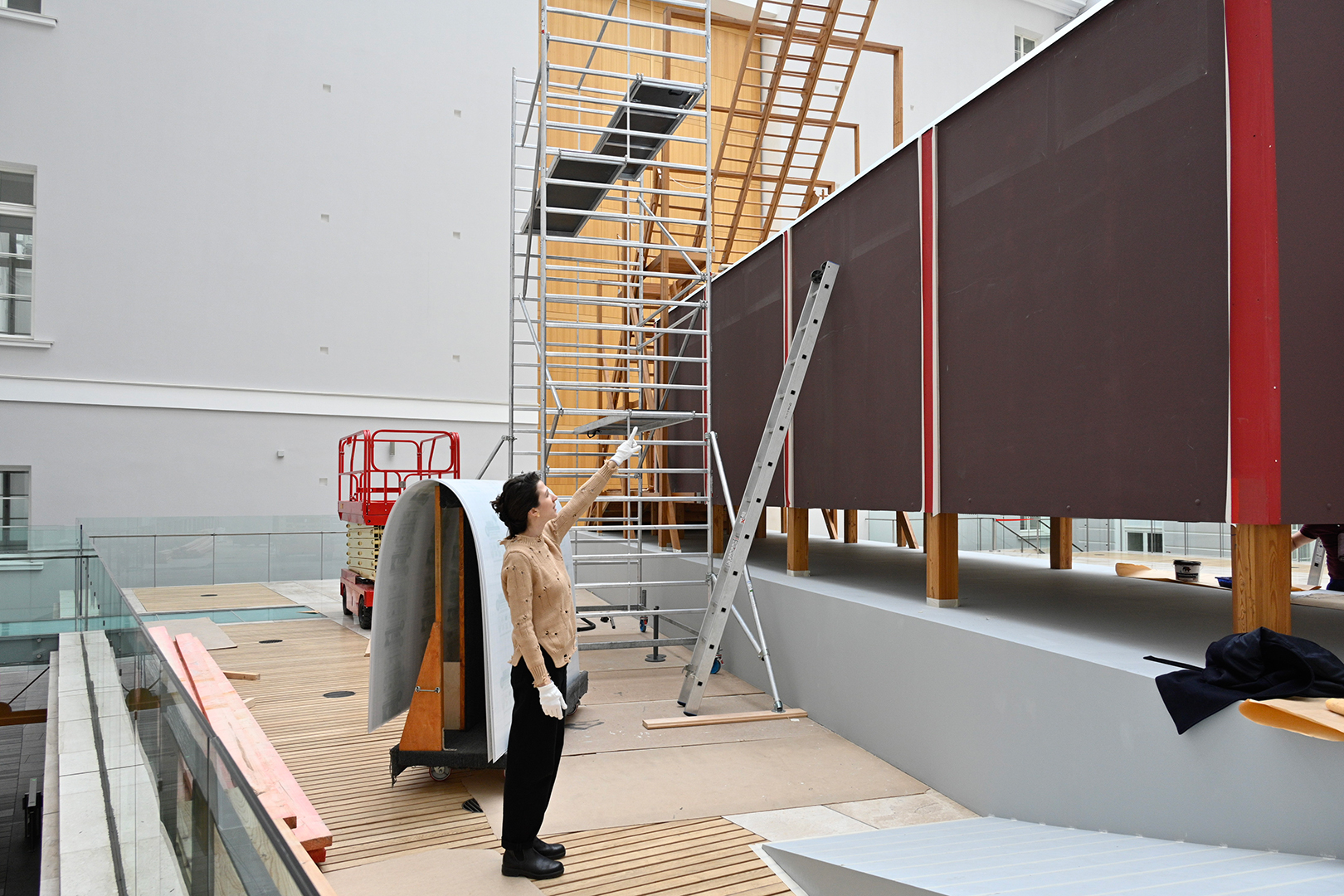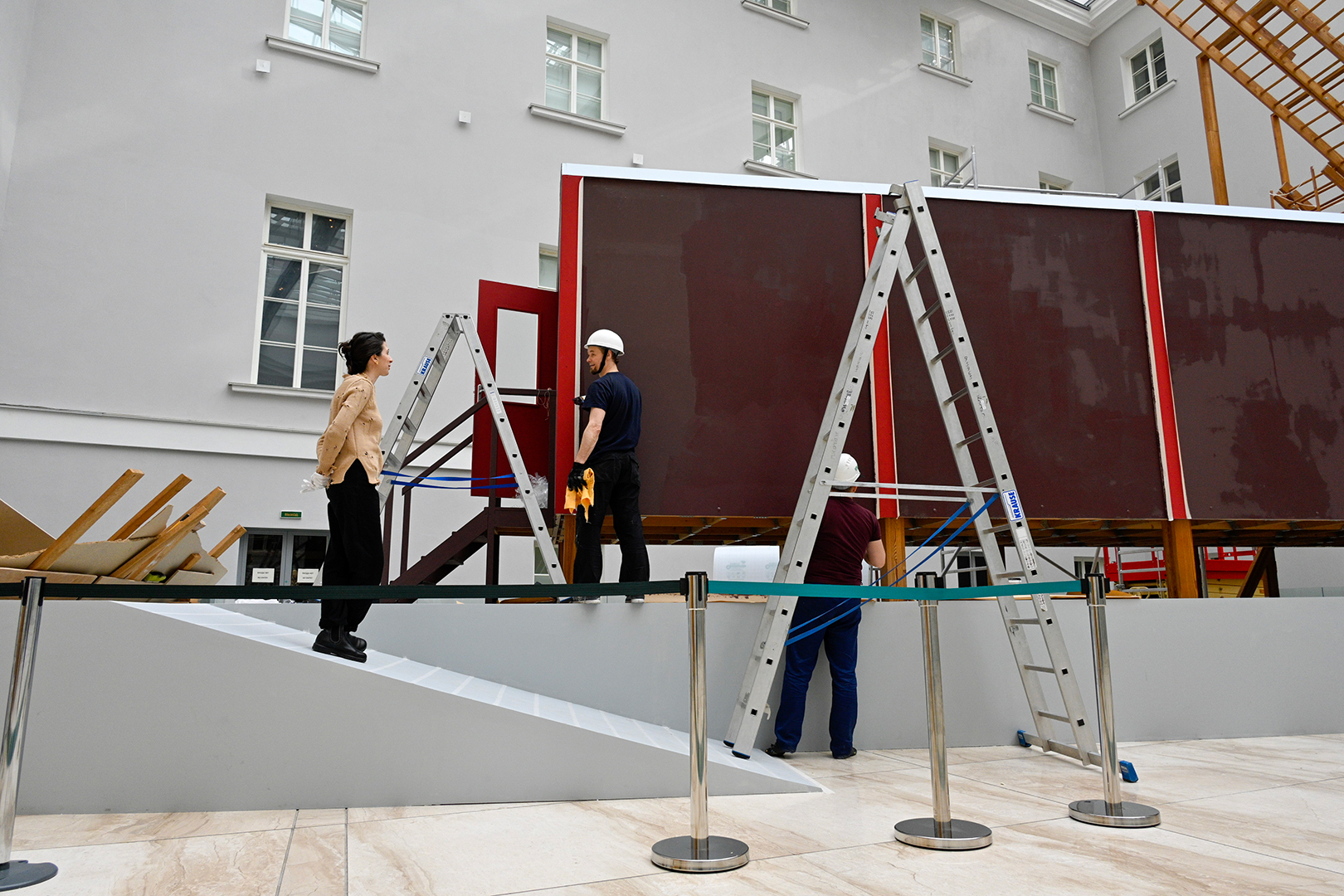Completion of the restoration of The Red Wagon by Ilya and Emilia Kabakov
The total installation The Red Wagon is one of the best-known works of contemporary art in the Hermitage collection.
The Red Wagon dates from a key period in the oeuvre of Ilya and Emilia Kabakov. The first version of the installation was created in Düsseldorf in 1991 and is now on display at the Museum Wiesbaden in Germany. The artists constructed the second version in 2008, for an exhibition at Moscow’s Garage Centre of Contemporary Culture, and they later donated it to the Hermitage collection.
“The Red Wagon is an iconic work of 20th-century art and one of the main representatives of that century in the Hermitage, alongside Matisse’s Dance, Kandinsky’s Composition No6 and Malevich’s Black Square,” General Director of the Hermitage Mikhail Piotrovsky says. “And it also a symbol of the artists’ friendship with the Hermitage, to which the installation was presented. We shall never forget that at the very keenest moment of the cultural blockade of Russia Emilia and Ilya Kabakov loudly and publicly came out with a declaration on the unacceptability of breaking off cultural ties. In the Hermitage, the three metaphorical stages of history represented in the General Staff building acquired an optimistic continuation in the form of the splendid, bright hall-courtyard reconstructed from ruins. The Hermitage restoration of The Red Wagon has given us one more reminder of how fragile works of modern art are and suggested a recipe for how to protect that fragility.”
“The Rosseti group is proud of its partnership with the State Hermitage, which is already ten years old,” Andrei Murov, First Deputy General Director of Rosseti, stated. “Our company has participated in many of the museum’s major projects that became important events in the cultural life of Saint Petersburg, including the extensive exhibition of Ilya and Emilia Kabakov ‘Not Everyone will be Taken into the Future’, which took place in 2018. Responding positively to the Hermitage’s proposal that we support the restoration of the total installation The Red Wagon by those same artists seemed logical and important to us. Particularly as the strength of the work’s emotional effect is truly impressive.”
The Red Wagon is a visual metaphor of the Soviet era, made up of three parts: a Constructivist stairway to heaven, the wagon and a rubbish heap.
The wooden ladder symbolizes the utopian hopes for a bright future in the 1920s. The wagon, on stands rather than wheels, mounted with Surrealist canvases is an image of the “eternal Soviet Stalinist paradise” of the 1930s–50s. The last part – a heap of building refuse scattered chaotically by the exit from the wagon embodies the period of the decline and collapse of the “Communist project” in the 1960s–80s.
The creators’ concept was that visitors should be able not only to view the installation from the outside but also to go inside the wagon, sit on the bench and listen to music. However, constant physical contact with viewers led to the gradual deterioration of the exhibit.
The complex restoration of The Red Wagon began with the development of a special strategy, the search for a balance between the preservation of the installation’s original appearance and its adaptation to continual interaction with people.
One of the main problems lay in the weakening of the structure of the multi-tier ladder that rises above the wagon. All the parts of the ladder were made from larch, a wood twice as heavy as pine or fir. Due to the drying of the timber, gaps had opened up at the sites of the joints, and the ladder began to sag under its own weight, bringing a threat of collapse.
An important stage in the preparatory work was the installation of scaffolding, which provided access to the structure for disassembly. In the course of the restoration, which began in 2024, the ladder was dismounted and moved from the General Staff building to the Staraya Derevnya Restoration and Storage Centre. There it was taken apart so as to remove soiling and coat the parts in a protective compound. Then each part was glued back together again. On three stages the restorers removed wooden rungs and installed aluminium pipes of the same diameter in their place so as to strengthen the entire structure. This sort of method of reinforcing the ladder had in its time been discussed with the installation’s creators, so the possibility of its future deformation was envisaged from the outset.
In conclusion, the ladder structures were returned to the General Staff building and remounted, while the paint covering of the walls of the wagon, which had lost its exhibition-worthy appearance over time, was refreshed.
The restoration work was carried out by specialists from the Laboratory for the Scientific Restoration of Furniture, part of the State Hermitage’s Department for Scientific Restoration and Conservation.
The project is being implemented with the assistance of the Rosseti public joint-stock company and the Cosmoscow Foundation for the Support of Contemporary Art.
 |
